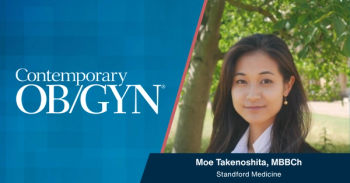
Maternal STIs and preterm birth
A population-based retrospective cohort study in JAMA Network Open concluded that maternal sexually transmitted infections (STIs) are significantly linked to an increased risk of preterm birth in the United States.
The study assessed nationwide birth certificate data from the US National Vital Statistics System between 2016 and 2019. All mothers who had a singleton live birth and available data on chlamydia, gonorrhea, or syphilis infection before or during pregnancy, and gestational age at birth comprised the analysis.
Preterm birth was defined as gestational age less than 37 weeks.
The study consisted of a total of 14,373,023 mothers, with a mean age of 29 years. Among the cohort, 51.4% were non-Hispanic White, 23.9% were Hispanic, 14.3% were non-Hispanic Black and 6.3% were non-Hispanic Asian.
Overall, 1.9% of mothers had chlamydia, 0.3% had gonorrhea and 0.1% had syphilis.
Among the newborns, 8.0% were preterm births.
The incidence of preterm birth was 9.9% for mothers with chlamydia, 12.2% for those with gonorrhea and 13.3% for those with syphilis.
Higher rates of gonorrhea, syphilis, and chlamydia infections were detected among women younger than age 25 years; for instance, for chlamydia, the rate was 4.6% vs. 1.1% for women between the ages of 25 and 34.
Similarly, non-Hispanic Black women had a much higher rate for the 3 infections than non-Hispanic White women: 4.3% vs. 1.1%, respectively.
Women with lower education (less than high school) also had greater rates of infection: 3.8% vs. 0.9% for those with higher education.
In addition, women who were unmarried had higher rates: 4.1% vs. 0.6% for those who were married.
Greater rates also applied to women who smoked during pregnancy: 3.9% vs. 1.7 who did not smoke.
Women who needed Medicaid were at higher risk of infection as well: 3.3% vs. 0.7% for those with private insurance.
After accounting for sociodemographic and medical and/or health factors, the adjusted odds ratio (aOR) of preterm birth was 1.03 for chlamydia, 1.11 for gonorrhea, and 1.17 for syphilis versus mothers without the infection.
For any of the 3 STIs, the aOR of preterm birth was 1.06 for mothers younger than age 25, 1.08 for those aged 25 to 34, and 1.09 for those 35 years or older.
The study also found that STIs increased the risk of preterm birth among Hispanic (OR = 1.06), non-Hispanic Black (OR = 1.04) and non-Hispanic White (OR = 1.10) mothers.
However, the results for non-Hispanic Asian mothers were less stable, perhaps due to the small sample size.
The potential mechanisms connecting maternal STIs to preterm birth remain murky, according to the authors, noting that a possible shared mechanism is inflammation.
“Chlamydia and gonorrhea, like some other lower genital infections, may ascend via the vagina-cervix and contribute to the occurrence of chorioamnionitis by partial activation of the systemic cytokine network,” they wrote, which might cause inflammation.
But whether a maternal infection causes preterm birth could also depend on the characteristic and concentration of the pathogen and the timing of infection.
The study supports the recommendation by the Centers for Disease Control and Prevention to screen and treat chlamydia, gonorrhea, and syphilis in pregnant women.
Pregnant women with STIs before or during pregnancy might benefit from targeted prevention for preterm birth; however, understanding the underlying mechanisms is imperative, according to the authors.
__
Reference
- Gao R, Liu B, Yang W, et al. Association of maternal sexually transmitted infections with risk of preterm birth in the United States. JAMA Netw Open. Published online November 29, 2021. doi:10.1001/jamanetworkopen.2021.33413
Newsletter
Get the latest clinical updates, case studies, and expert commentary in obstetric and gynecologic care. Sign up now to stay informed.




















